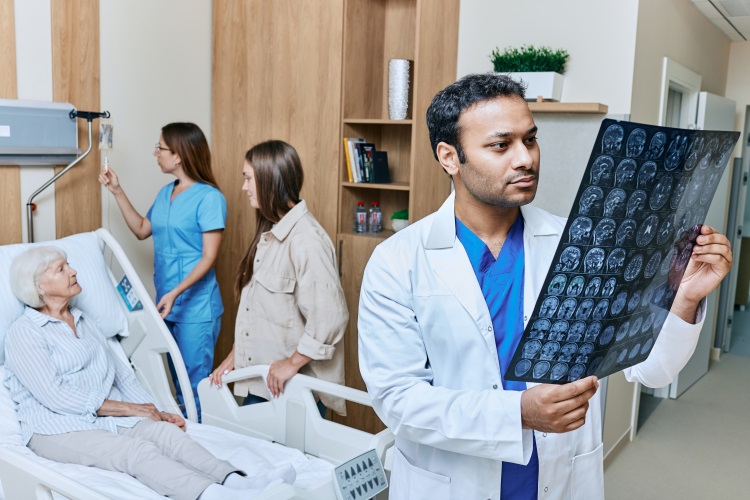Navigating Neuro Rehab & Stroke Recovery

Neuro recovery, also known as neurological rehabilitation, is designed to help individuals affected by nervous system disorders or injuries regain function and improve their overall well-being. This process benefits those recovering from conditions such as stroke, spinal cord injuries, or neurodegenerative diseases. The primary goals of neuro recovery are to restore physical and cognitive abilities, improve mobility, and regain independence. Early intervention and structured rehabilitation are essential in maximizing recovery potential and enhancing quality of life by addressing both physical and cognitive limitations through personalized care plans. 1,2
Key Conditions that Benefit from Neuro Rehabilitation
Vascular: Stroke, brain hemorrhage, TIAs
Infections: Meningitis, encephalitis, polio, brain abscesses
Trauma: Traumatic brain injury and spinal cord injuries
Neuromuscular: Bell’s palsy, cervical spondylosis, carpal tunnel, tumors, Guillain-Barré, muscular dystrophy, myasthenia gravis
Episodic: Headaches, seizures, dizziness
Degenerative: Parkinson’s, MS, ALS, Alzheimer’s, Huntington’s 2,4
Stroke Rehab and Recovery
Stroke rehabilitation is a comprehensive program that helps individuals regain skills and abilities lost after a stroke. This process involves stages of recovery tailored to the specific areas of the brain affected. Therapies like physical, occupational, and speech therapy play a critical role in helping stroke patients regain mobility, communication, and daily living skills. Neurological evaluations and ongoing assessments are essential to track progress and adjust care plans as needed. Early, intensive therapy—often beginning within 24 to 48 hours of a stroke—significantly improves outcomes by taking advantage of the brain’s capacity to relearn functions during the initial months of recovery.3
Advanced Therapeutic Approaches in Neuro Recovery
Modern neuro recovery programs incorporate a variety of advanced therapy techniques and modalities designed to enhance patient outcomes:
- Bungee mobility training improves balance and walking by providing a safe, supportive environment for patients to practice movements.
- Dysphagia therapies, such as Synchrony and VitalStim, target speech and swallowing difficulties to help restore these vital functions.
- Vestibular training benefits patients with balance disorders by focusing on stabilizing and improving their equilibrium.
Additionally, the use of state-of-the-art therapy equipment in specialized neuro rehabilitation gyms creates an immersive and dynamic environment, fostering more effective recovery.
Comprehensive Care and Support for Patients
Effective neuro recovery relies on a multidisciplinary team of specialists, including neurologists, physiatrists, psychologists, physical, occupational, and speech therapists, as well as licensed nurses, and an internist, hospitalist, SNFist, or family physician. This team collaborates to provide continuous care and assessments. These experts focus on developing individualized treatment plans that address each patient’s specific needs, with input from both the patient and their family members.
Comprehensive care also involves a range of therapies—physical, occupational, speech, and recreational therapy—that aim to restore function, mobility, and communication skills. In addition to these therapies, pain management and psychological therapy are key components, helping patients cope with the physical and emotional challenges of recovery. By addressing the whole person, this holistic approach ensures that each patient’s quality of life is maximized during the recovery process. 2,4
Preparing for Life After Rehabilitation
Successfully transitioning back to daily life after neuro rehabilitation requires thorough, individualized care planning. This includes home therapy evaluations to ensure a safe and supportive environment. Patients and families are encouraged to make necessary adaptations to the home, such as installing mobility aids and creating accessible spaces to optimize recovery.
Exploring neuro recovery programs that prioritize functional independence and quality of life can further enhance long-term outcomes after a stroke or other neurological event. Ongoing support and follow-up care are crucial for maintaining progress, preventing complications, and continuing to build independence. 3
References
[1] “Neurological Rehabilitation.” Duke Health, www.dukehealth.org/treatments/physical-therapy/neurological-rehabilitation. Accessed 18 Sept. 2024.
[2] “Neurological Rehabilitation.” Johns Hopkins Medicine, 2 July 2024, www.hopkinsmedicine.org/health/treatment-tests-and-therapies/neurological-rehabilitation.
[3] “What to Expect as You Recover from a Stroke.” Mayo Clinic, Mayo Foundation for Medical Education and Research, 17 Apr. 2024, www.mayoclinic.org/diseases-conditions/stroke/in-depth/stroke-rehabilitation/art-20045172.
[4] “Neuro-Rehabilitation Program.” UCLA Health, www.uclahealth.org/medical-services/neurology/neurological-rehabilitation. Accessed 18 Sept. 2024.
The information provided in the article is for general informational purposes only. This information is not a substitute for medical advice. Accordingly, before taking any actions based upon such information, you are encouraged to consult with the appropriate professionals.




